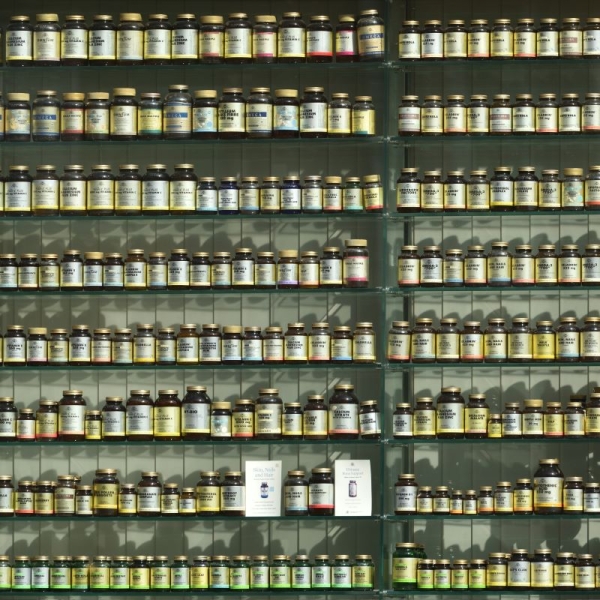Contents
30 Aug 2024 — As European food authorities highlight potential health issues associated with ashwagandha (Withania somnifera), the nutrition industry underscores the ingredient’s safety, supported by research data. At the same time, companies highlight how the increased scrutiny helps drive higher safety and quality standards. They call on stakeholders and manufacturers to submit robust and comprehensive safety data to authorities.
The ingredient, used in traditional remedies for thousands of years, has been banned in Denmark after a risk assessment concluded that it could not set a daily intake limit under which there would be no risk of harmful effects. Earlier this year, the Netherlands and France advised certain population groups against using the botanical.
In this last article of our three-part series on ashwagandha, Nutrition Insight discusses the market impact of the increased scrutiny of the botanical with key market players Arjuna Natural and Sabinsa. In earlier installments, we examined food safety authorities’ evaluations and discussed the available data on the botanical’s potential health risks with botanical experts.
“The recent ban on ashwagandha by authorities in countries like Denmark seems to contradict the extensive scientific and traditional evidence supporting its safety and benefits,” says Dr. Benny Antony, joint managing director at Arjuna Natural.
“Our position is that, given ashwagandha’s long history of safe use and global acceptance, we deny such allegations and assert that these bans are not justified. Regulatory decisions should be based on a comprehensive review of modern scientific research and traditional knowledge to ensure they accurately reflect the herb’s safety and benefits.”
He underscores that manufacturers and stakeholders are actively providing robust and comprehensive safety data to health authorities to address the issue. “This includes evidence from human clinical trials and animal toxicology studies, demonstrating ashwagandha’s safety across various applications.”
Driving higher quality standards
Antony underscores that the increased legal scrutiny of ashwagandha “will significantly impact market development and innovation. It drives the industry toward higher standards of safety and quality.”
For example, he details that submitting comprehensive safety data for the company’s ashwagandha product, Shoden, to authorities ensures compliance and strengthens its research-backed efficacy, which offers greater assurance to consumers and regulators.
“It pushes the industry to innovate more responsibly, focusing on rigorous scientific validation and transparency. In the long run, this can strengthen the market, leading to more credible and high-quality ashwagandha products that meet global regulatory standards,” highlights Antony.

Antony expects that the increased legal scrutiny of ashwagandha will drive the industry toward higher safety and quality standards.“Indian Ayurvedic adaptogens, like ashwagandha, when combined with scientific advancements, offer exceptional medicinal value, enhanced efficacy and potency, making them some of the best options available on the market.”
Shaheen Majeed, Sabinsa’s global CEO and managing director, adds that companies in global markets will continue to develop and study products despite the legal scrutiny and potential future bans.
“What this does, though, is potentially deny consumers access to an herb with demonstrated benefits in managing stress. Rather than restricting this well-known and safe herb with a long tradition of use, we believe increasing vigilance would be more effective in preventing substandard or contaminated products from entering the market.”
“Involving key players from regulatory bodies and industry experts to provide guidance on quality, standardization and supply chain management makes far more sense, especially given how questionable the evidence of toxicity is,” he illustrates.
Mild safety issues
Arjuna Natural and Sabinsa illustrate that ashwagandha might have some mild safety issues, pointing to the botanical’s long history of use in traditional remedies and elaborate research.
For example, a recent review of the anti-stress properties of ashwagandha concluded that the botanical is safe for consumption. At the same time, the authors warned that no systematic clinical studies have been conducted on its potential acute or chronic toxicity.
“Potential safety issues with ashwagandha are generally rare and mild, such as gastrointestinal discomfort,” states Antony from Arjuna Natural. “Certain specialized ashwagandha, thoroughly studied, exhibit strong safety profiles, making them highly suitable for potent health benefits.”
Meanwhile, Majeed details a lack of substantial scientific evidence for the claims of liver damage when using “properly standardized and high-quality ashwagandha supplements.” Hepatotoxicity or injury to the liver (function) is one of the safety issues linked to ashwagandha products.
“Ashwagandha has a long history of use as an adaptogen and is well known for its benefits in increasing vitality and managing stress. Sabinsa recently published two clinical studies on Shagandha, our branded ashwagandha, for stress and anxiety support, which also examined the safety of this herb as a supplement.”

Arjuna Natural and Sabinsa highlight that ashwagandha has a long history of use in traditional remedies.Demonstrate safety

Antony emphasizes that manufacturers and stakeholders need to provide robust and comprehensive safety data to demonstrate the safety of ashwagandha to authorities, such as the UK Food Standards Agency (FSA), which is asking for evidence on the botanical’s safety and use to inform a risk assessment by the country’s Committee on Toxicity.
“This includes evidence from both human clinical trials and animal toxicology studies. For example, Shoden ashwagandha has submitted extensive safety data to the FSA and others, showcasing its safety in humans through clinical trials and in animals through rigorous toxicology studies.”
“Such detailed submissions are critical for meeting regulatory standards and ensuring that ashwagandha is evaluated on solid scientific grounds. This approach helps reassure authorities of the botanical’s safety for continued use in food supplements.”
Nathan Barnhouse, FSA director of Wales, tells us that further information is required on the chemical composition of products on the market. To ensure safe consumption, the organization calls for data to inform risk assessment, which he says “ensures that decisions are based on the most appropriate information and are evidence-based.”
“There is also a general lack of data available in the public literature to assess the long-term safety of ashwagandha. However, pending the responses to the call for evidence and the evaluation by the Committee on Toxicity, we will be able to determine with more certainty whether any significant evidence gaps remain.”
“At this stage, we are monitoring responses received to the call for evidence and will continue to do so until the call’s closing date.”
Lack of standardization
Sabinsa’s Majeed adds that the mixed results reported by ANSES (the French National Agency for Food, Environmental and Occupational Health and Safety) regarding the safety of W. somnifera underscore challenges posed by variability in the composition of different Withania extracts.
“The lack of uniform standardization across products used in studies makes it difficult to draw consistent conclusions about the safety and efficacy of the herb. This issue is not unique to Withania — it applies to many other herbs as well. Without uniform standards, the outcome of safety and efficacy studies can vary significantly depending on the specific extract composition.”

Majeed notes that a lack of uniform standardization or composition remains a significant issue in determining a safe dosage.He notes that this lack of uniform standardization or composition remains a significant issue in determining a safe dosage in EU formulation, even though clinical and toxicity studies are published and available.
“This variability poses a critical challenge as safety studies or clinical research conducted on one composition cannot be reliably used to determine the safe dosage of another composition.”
“This consistency highlights the need for regulatory bodies, particularly with the EU, to establish a monograph on W. somnifera,” Majeed asserts. “In countries where a Withania monograph exists, like Canada and the US, there is much better control on the quality, testing and safety that provides a consistent framework for manufacturers to follow.”
US regulatory status
Meanwhile, a US FDA spokesperson tells us that the organization “does not approve supplements for safety and effectiveness and does not have a comprehensive list of ingredients permitted or prohibited in dietary supplements.”
“If the FDA finds a product unsafe, it can take legal action against the manufacturer or distributor and may issue a warning or require that the product be removed from the marketplace.”
Thomas Brendler, Ph.D., an expert in medicinal plant use and regulation, highlights that in the US, discussions of ashwagandha’s safety are primarily limited to industry stakeholders. “Nothing is happening on a regulatory front yet, nor, I don’t think, have there been any concerns raised by consumers yet.”
He illustrates that the industry’s primary concern involves a “failure to warn,” which is a typical plaintiff’s cause. “If you know something and don’t share this with your consumers, you’re opening up to litigation.”
By Jolanda van Hal

